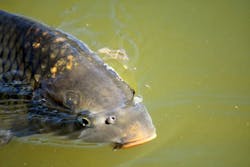EPA Approves Limits on Mercury in California Waters
The U.S. Environmental Protection Agency (EPA) announced the approval of new water quality criteria for mercury in California waters. The new rules, developed by the State Water Resources Control Board, set mercury limits in fish tissue to protect human health and aquatic-dependent wildlife. New protections also have been added for tribal cultural use and subsistence fishing.
In California, Gold Rush-era mining operations released millions of pounds of naturally occurring mercury, a potent neurotoxin, into state waterways. Once there, the toxic metal builds up in fish tissue and is consumed by people and wildlife. To address that risk, the state’s new criteria set maximum mercury limits in fish tissue for various species caught for sport, subsistence and cultural practices.
“We commend the State Water Resources Control Board for working with numerous tribes and dischargers to develop and adopt water quality standards for protecting human health and wildlife throughout the state from the harmful effects of mercury,” said Alexis Strauss, EPA’s acting regional administrator for the Pacific Southwest. “By focusing on mercury concentrations in fish tissue, these rules will have a direct and positive impact on public health and the environment.”
The state’s new rules set five new water quality criteria for mercury in fish tissue for tribal subsistence fishing, general subsistence fishing, prey fish, sport fish and for fish commonly consumed by the protected California Least Tern. The new criteria will help protect and inform the public about levels of mercury in popular sport fish like salmon, bass, sturgeon and trout.
“Salmon, bass, sturgeon and other popular fish like trout are sought after as a key food source by California Native American tribes, and other groups that depend on fish for sustenance, but are often contaminated by mercury. Mercury is found in many fresh water bodies in California, and is largely a legacy of the Gold Rush era, and difficult to deal with, but cannot be ignored,” said State Water Board Chair Felicia Marcus. “This approval is an important step in focusing attention on what can be done to limit exposures.”
The new mercury criteria will apply to inland surface waters, enclosed bays, and estuaries of the state, except for water bodies where approved site-specific objectives already exist, such as San Francisco Bay and Delta, Clear Lake, and portions of Walker Creek, Cache Creek and Guadalupe River Watersheds.
